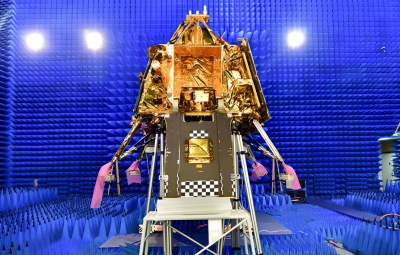Bengaluru: The flight acceptance hot test of the CE-20 cryogenic engine that will power the cryogenic upper stage of the launch vehicle for the Chandrayaan-3 mission was successfully conducted, according to the Indian Space Research Organisation.
The hot test was carried out for a planned duration of 25 seconds at the High Altitude Test Facility of the ISRO Propulsion Complex at Mahendragiri in Tamil Nadu February 24, the Bengaluru-headquartered national space agency said.
“All the propulsion parameters during the test were found satisfactory and closely matched with predictions,” an ISRO statement said Monday.
The cryogenic engine will be further integrated with the propellant tanks, stage structures and associated fluid lines to realise the fully-integrated flight cryogenic stage, ISRO said.
Earlier this year, Chandrayaan-3 lander successfully underwent EMI/EMC test at UR Rao Satellite Centre here.
EMI-EMC (Electro – Magnetic Interference/ Electro – Magnetic Compatibility) test is conducted for satellite missions to ensure the functionality of the satellite subsystems in the space environment and their compatibility with the expected electromagnetic levels, it was noted.
“This test is a major milestone in the realisation of the satellites,” ISRO had said.
Chandrayaan-3 interplanetary mission has three major modules: the propulsion module, lander module, and the rover. The mission’s complexity calls for establishing radio-frequency (RF) communication links between the modules.
During the Chandrayaan-3 lander EMI/EC test, launcher compatibility, antenna polarisation of all RF systems, standalone auto compatibility tests for orbital and powered descent mission phases, and lander and rover compatibility tests for post landing mission phase were ensured, according to ISRO.
Chandrayaan-3 is a follow-on mission to Chandrayaan-2 to demonstrate end-to-end capability in safe landing and roving on the lunar surface. ISRO plans to launch the mission in June.
It will be launched by Launch Vehicle Mark 3 (LVM3) from the Satish Dhawan Space Centre in Sriharikota (Andhra Pradesh).
The propulsion module will carry the lander and rover configuration till 100 km lunar orbit. The propulsion module has Spectro-polarimetry of Habitable Planet Earth (SHAPE) payload to study the spectral and polarimetric measurements of Earth from the lunar orbit.
PTI






































